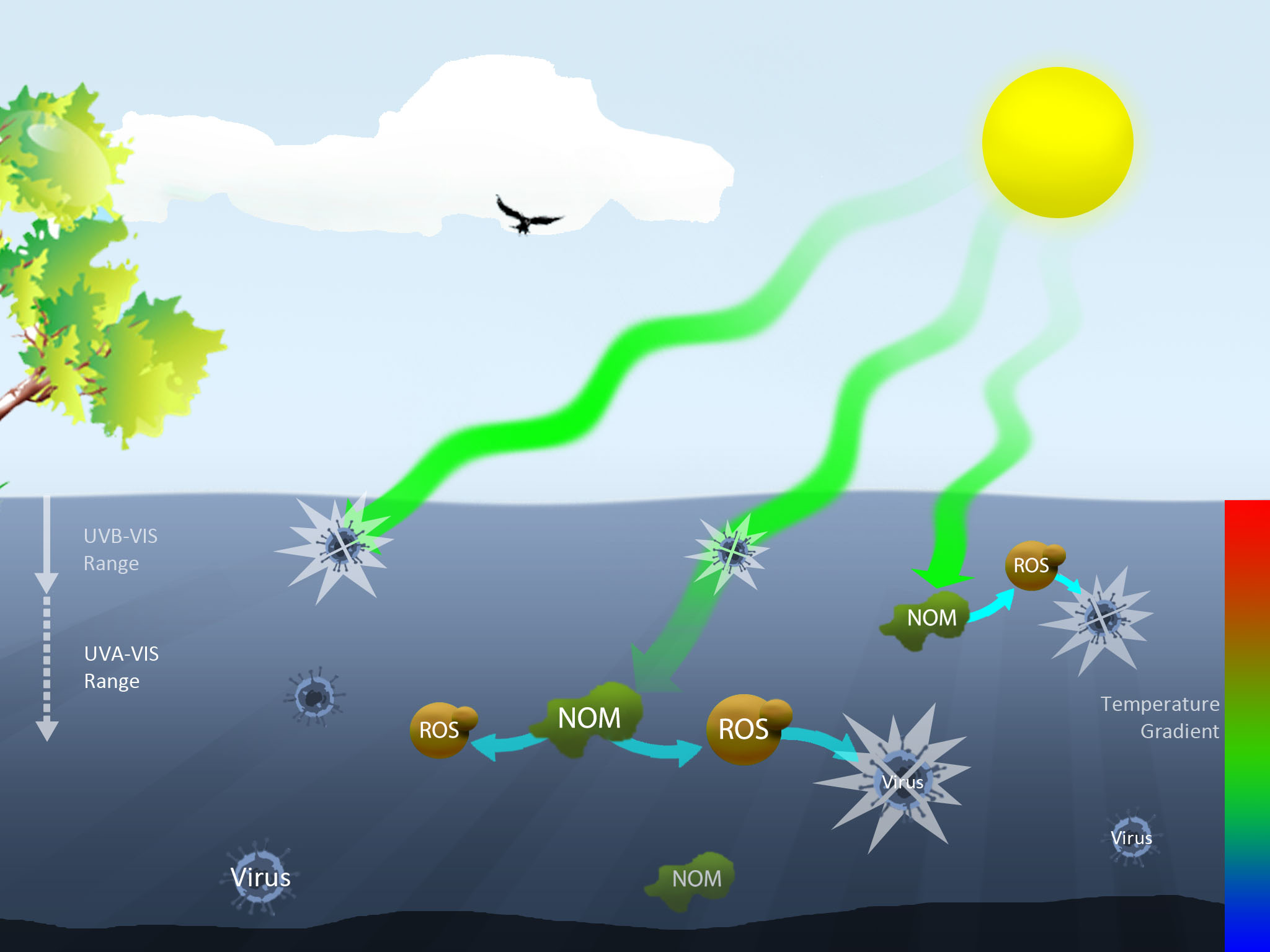Motivated by the need to provide clean drinking water, safe reuse of wastewater, we are conducting a comprehensive study on the role of sunlight, temperature and organic matter on virus inactivation.
Although the sunlight mediated inactivation of viruses has been recognized as an important process that controls surface water quality, the mechanisms of virus inactivation by sunlight are not yet clearly understood. We investigated the synergistic role of temperature and Suwannee River natural organic matter (SRNOM), an exogenous sensitizer, for sunlight-mediated inactivation of Group A rotavirus and MS2 bacteriophage. Upon irradiation by a full spectrum of simulated sunlight in the absence of SRNOM and in the temperature range of 14-42°C, high inactivation rate constants MS2 and rotavirus were measured.
A weak temperature (14 – 42°C) dependence of kobs values was observed for both viruses irradiated by the full sunlight spectrum. Under the same irradiation condition, the presence of SRNOM reduced the inactivation of both viruses due to attenuation of lower wavelengths of the simulated sunlight.
For rotavirus and MS2 solutions irradiated by only UVA and visible light in the absence of SRNOM, inactivation kinetics were slow and temperature-independent for the range considered.
Conversely, under UVA and visible light irradiation and in the presence of SRNOM, temperature- dependent inactivation of MS2 was observed.
For rotavirus, the SRNOM-mediated exogenous inactivation was only important at temperatures greater than 33°C. While SRNOM-mediated exogenous inactivation of MS2 was triggered by singlet oxygen, the presence of hydrogen peroxide was important for rotavirus inactivation in the 40-50°C range.

Publication
Funding
Academic Excellence Alliance (AEA) program at King Abdullah University of Science and Technology (KAUST).
